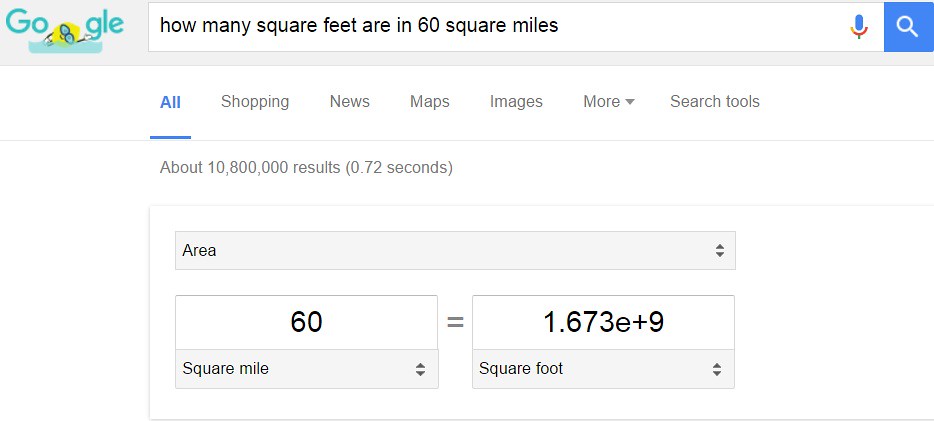How Large Is Huauchinango?
In order to understand the devastating impact that rain can have across a given region, there are parameters that need to be known: population, size of city, and amount of rainfall. When rainfall imparts itself on a given region, the volume is usually the most critical aspect aside from the infrastructure in place by the city officials.
Unfortunately, when the rainfall is accompanied by thrashing winds with speeds in the tens to hundreds of miles per hour, then the destruction is amplified. These events are tragic and leave a lasting disastrous effect on a region. Let us hope that the destruction is minimized as much as possible.
According to a twitter post shown below, Hurricane Earl has already taken 39 lives and caused major flooding across Mexico.
Upon clicking on the story, the reader is directed to the website "CBS.com" to the story titled "Tropical Storm Javier forms off Mexico as Hurricane Earl death toll rises" that provided further details regarding the destructive effects of Hurricane Earl -- which include the tropical storm Javier. Here is an excerpt describing the rain fall:
At least 28 people died in multiple mudslides in the mountainous north of Puebla state, National Civil Protection Coordinator Luis Felipe Puente said in an interview with ForoTV. He said 25 of the dead were in various parts of the township of Huaucinango and three were in Tlaola.Rains also set off mudslides in the Gulf coast state of Veracruz that killed 10 people, officials reported. Gov. Javier Duarte said the landslides were in the towns of Cocomatepec, Tequila and Huayacocotla.Heavy rain continued in the area, leading officials to close a section of the main federal highway connecting Mexico City to the region. Crews spent the day clearing a number of landslides from the road, but authorities said mud was continuing to slide with the new rain.
The website went on to report rainfall between 4-8 inches of rain with winds up to 45 miles per hour. In order to get a grasp on the amount of rainfall that dropped onto the mountainous region, a few calculations need to be done. I have to admit that I have been busy over the last couple of weeks writing similar blog posts. The disaster due to irregular climate has caused an enormous amount of rain to fall in different regions of the world.
Over the last month, two blog posts have been written about heavy rainfall in different regions -- China and last weekend -- Elliot City (Maryland, USA). Click on the links to read about the respective rainfall in those regions. Additionally, I was planning on writing about India last week, but was too busy.
What is going on with the weather lately?
Too much rainfall and destruction.
In order to start the calculations -- which are similar in methodology, the size of the city (region) of Huauchinango needs to be known. According to the "Wikipedia" page for Huauchinango, the size of the region is roughly 160 square kilometers. Lets take a short cut and ask Google.com to convert square kilometers into square miles to save us one step as shown below in the image:
Next, in order to determine the volume of rain that poured down in the city, another conversion of units is necessary. The conversion from square miles to square feet needs to be done. Of course, Google.com seems to be a good search inquiry to use (since I am being lazy at the moment). Below is an image of the conversion factor:
I must point out a slight mistake. In the first image of the conversion factor from square kilometers to square miles, the number of square miles is equal to 62 sq. miles. On the next image, I transferred over the wrong number -- slightly less to 60 square miles. Although, since the point of the post is to approximate a value, I think that I can let this mistake slide. Forgive me.
According to the news account, the amount of rain that fell was between 4-8 inches. For the purposes of getting a rough idea, I will use the average of the two numbers -- 6 inches. In order to calculate the volume of rain, an equation is needed which is shown below:
In the expression (or equation) above for the volume of rain, there are two parameters. The first is an area -- which has been determined to be 1.67 billion cubic feet of water over an area of 60 square miles. Whereas the second parameter needed to determine the volume is the height. The number chosen out of the range was 6 inches of rain -- which is equal to 0.5 feet. If we plug those numbers into the expression above, the equation is shown below:
The answer is in scientific notation. Basically, the total volume rain that fell over an area of 60 square miles is equal to 836 million cubic feet. Oh my. Add to that calculation winds approaching 45 miles per hour and destruction is easily seen. What a terrible situation?
As usual, these large numbers are too astronomical for me to wrap my head around. Therefore, usually, I try to think of a metric (a known volume) that I can use to cast the result into for me to visualize. Below are the results of that analysis.
How Many Olympic Size Pools Could Be Filled?
Naturally, when such a large number (actually an enormous number) is the result of a calculation, further dimensional analysis is needed to put the volume into perspective. What type of metric is appropriate for the volume? The number is huge. In order to find a proper metric, a couple of guesses need to be made.
To start with, since the world is fascinated by the Olympics and the world teams competing in the summer events, how about using the Olympic Size Swimming Pool as a metric?
In order to do so, the volume of an average Olympic Size Swimming Pool needs to be known. Recently, the volume of the pool has been used in another blog post where large volumes of liquid was the center subject of the post. A couple of weeks ago, I wrote a post regarding a sewage spill that dumped nearly 2.4 million gallons into the Los Angeles River. In that post, the metric of a Olympic Size Swimming pool was used to cast the large volume into perspective. According to that post, the volume of water needed to occupy an Olympic Size Swimming pool is 660,000-gallons. A picture of an Olympic Size Swimming pool is shown below taken from the "Wikipedia" page:
Source: Ahl Baku
For those readers who have been engaged in watching the games at Rio -- does this look familiar? As I mentioned the total volume is 660,000-gallons in total to fill up an Olympic Size Swimming pool. Since, the volume of the total amount of rainfall is known from the calculations above, the two numbers simply are divided by one another.
But wait -- the units are not the same....the Olympic Size Swimming Pool is expressed in units of gallons. Whereas the volume of rainfall is expressed in units of cubic feet. In order to perform a direct comparison, a conversion into the same units is needed. The volume of rainfall is converted into units of gallons as shown below:
Now, with the units both expressed in gallons of the two volumes (Olympic Pool and Rainfall), the two numbers can be divided by each other to yield the number of Olympic Size Swimming pools that could be filled with the total rainfall that the city of Huauchinango experienced over the weekend. The calculation is shown below:
Wow! The total amount of rainfall that the city of Huauchinango experienced over the weekend would fill 9,484 Olympic Size Swimming pools -- Wow!
Can you really wrap your head around this?
I have trouble visualizing that amount of swimming pools.
How about using a larger space as a metric?
Mercedez Benz Superdome?
In the past blog posts, a larger volume that has proved handy when enormous numbers are the result of calculations, is the Mercedez Benz Superdome (located in Louisiana) and is shown below:
Source: Wikipedia
Since the volume is extremely large as indicated by the number of Olympic Size Swimming pools, a larger volume is needed to use in carrying out dimensional analysis of the storm in Mexico. According to the "Wikipedia" page, the interior space (volume) of the superdome is approximated to be around 125,000,000 cubic feet. In the initial calculation of the volume of rainfall, the answer was expressed in units of cubic feet. With the values expressed in the same units, a simple division is needed as shown below to determine how many superdome's could be filled:
That is still a large number of superdomes to imagine. According to the calculation, nearly 7 superdomes could be filled with the total amount of water that fell on 60 square miles in Huauchinango over the weekend. Wow!
Add into the result the 45 mile per hour wind and the destruction is clearly understandable. On top of all of this, the region sits on a slope of a hill. An additional factor of gravity sending the rainfall down a slope would give the storm additional power (destructive power).
Conclusion...
After calculating the total volume of rainfall that Huauchinango received over the weekend, the amount of destruction is more understandable. Still, the destruction which includes the loss of life is never really understandable. Storms like tropical storm Javier remind us of the sheer power of nature and that we are a very small part of a larger world. Additionally, the importance of having the proper infrastructure (buildings, disaster plans, government, etc.) to help out is of the most critical importance.
Looking a the numbers as a result of the calculations. 9,484 Olympic Swimming Pools, nearly 7 Mercedez Benz Superdomes -- these volumes are not trivial or small. As you watch the games try to imagine the volumes and their relation to the natural disaster.
In the near future, I will write a summarized post of the recent rainstorms that have hit the world and their relative values. Until next time, have a great day!










No comments:
Post a Comment